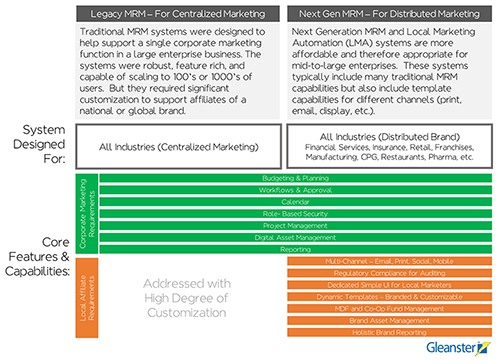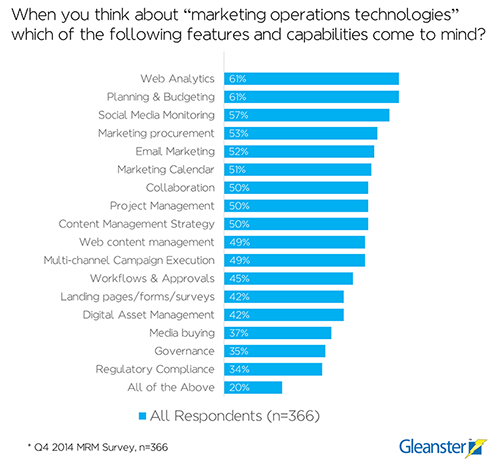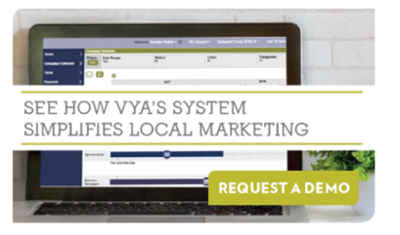
If you ask your colleagues and peers what MRM means, you are sure to find a complete lack of consistency in the definitions. For a software category that has been around for decades, it’s interesting how confusing it is to define it.
Lack of clarity is partly to blame for a conservative approach to marketing operations technology adoption, which by nature becomes a secondary concern in times of economic uncertainty when every dollar needs to go to top-line growth. But it’s pretty difficult to justify an investment if you don’t know what MRM does or why it’s important. Something else happened over the last decade that shook things up in the world of MRM: a new generation of technology solutions entered the market, and they are designed to be easier to use and address unique nuances of distributed brand environments – issues that historically could not be addressed by legacy MRM platforms. The problem is, many marketers don’t exactly know what these tools do or how to spearhead an investment. What’s more, a litany of different terms are being used to market these different tools, and most of the time they may not even have comparable features.
Originally MRM solutions were designed to support back-office marketing execution with budgeting, planning, calendars, workflow and approval, project management, asset management, and strategic alignment for large, complex marketing environments. MRM has a reputation for massive seven-figure licensing, complex ERP-centric interfaces, and a solution designed for a single central corporate marketing function. Today a new breed of MRM technology is designed to be more affordable, easier to use, and address the nuances of a disturbed marketing environment where a national or global brand with a corporate marketing function and a network of local or affiliate marketers who also represent the brand. For some industries with distributed marketing operations (manufacturing, insurance, financial services, healthcare, franchises, retail, etc.) managing this complex environment manually has become a futile effort where legacy processes and infrastructure are approaching diminishing returns. The result is a lack of visibility into operational execution, brand consistency challenges, renegade investments in redundant marketing tools like email marketing, and long cycle times on marketing production.
Figure 1: The Difference between MRM in 2001 and MRM in 2015

Marketers are by nature creative, and they find ways to support marketing execution via internal email workflow processes, shared drives, spreadsheets, and a litany of investments in point solutions like project management, calendars, collaboration, and digital asset management. SaaS-based infrastructure made it much easier to deploy low-cost solutions that only partially met the needs of marketers. But marketing remains one of the last functions in business to be optimized inside a technology platform, and until now there weren’t a ton of viable options for mid-to-large enterprises.
But it’s 2015, and its high time we take a closer look at the technologies marketers SHOULD be evaluating to support back-office marketing execution in a distributed marketing environment. Survey data from 366 marketing operations professionals in the Q4 2014 Marketing Resource Management survey revealed 5 out of 10 marketers were not even aware of a software category called MRM. These respondents represented marketing operations and brand marketing responsibilities in distributed marketing organizations. We never expected to see such a diminished understanding of MRM. What’s more, Top Performing organizations (the 25% of organizations achieving the highest growth in year-over-year revenue) were actually 2x more likely to deploy MRM technology to streamline back-office execution. That tells us there is value to MRM, or at least it’s an enabler to top-line growth for organizations that invest in operationalizing or automating back-office marketing execution.
What Marketers Expect from MRM
There remains a great deal of confusion about the value proposition behind MRM. This confusion echoes throughout requirements gathering from buyers who will frequently short-list a litany of different solutions with very different value propositions: marketing automation, email marketing, web analytics, local marketing automation, etc.
Figure 2: Top Features Respondents Expect in MRM (n=366)

*Respondents were asked to select all applicable answer choices.
Gleanster asked 366 brand marketers what types of features they expected to find in a marketing operations technology. Interestingly enough, many of the features on this list are not core value propositions in MRM tools (web analytics, email marketing, WCM, landing page hosting, etc.), but we really wanted to understand how marketers perceive the challenges they face today, and how they prioritize these challenges. A variety of shocking themes bubble out of this data, and it has considerable ramifications for the priorities marketers are trying to solve in 2015. Among the top 10 features that resonate with MRM, only half actually reside in traditional MRM tools: budgeting, procurement, calendar, collaboration, and project management. The remaining technologies that made the top 10 list were channel-specific technologies such as email, social media, and web analytics – all top of mind for marketing operations professionals.
From a customer engagement standpoint, distributed marketers struggle to manage the brand holistically across corporate and local marketing communications with customers (as evident by the strong desire to manage marketing procurement, governance, and regulatory compliance). As we saw in Figure 1, this is one of the core value propositions behind the new generation of MRM and LMA tools, which mitigate the operational challenges corporate marketing face when supporting a network of hundreds or thousands of local marketers (all with varying degrees of domain expertise across different channels.) What is decidedly missing from the list of marketing operations technology features is the core value proposition behind the new generation of tools that allow corporate marketing to create and manage brand compliant templates for local marketers to customize for local target audiences. This is a manual and often impossible task for corporate marketing to manage outside a centralized system, and the end result is chaos in redundant technology use, brand compliance issues, and regulatory violations between corporate and local marketers.
It’s also interesting to see that respondents did not associate traditional MRM features like workflow and asset management as core value propositions; they didn’t even show up on the top ten expected features. These days most marketing platforms have some form of customizable approval and workflows, so maybe respondents didn’t associate these capabilities with MRM exclusively. Ultimately the data reinforces the challenge that Localized Marketing Automation or Marketing Asset Management (and, yes, Marketing Resource Management) are attempting to solve: the operational execution and management of multi-channel communications in distributed or localized marketing efforts.
The new generation of MRM solutions contain both operational efficiency capabilities (collaboration, workflow, project management, a calendar, co-op fund management, etc.) AND customer engagement capabilities (the ability to manage brand compliant multi-channel templates that can be customized for local target audiences). Today’s MRM tools are available on-premise and on-demand and even have packaged integrations for linking marketing execution processes to customer engagement technologies like Web Content Management, Campaign Management, Email Marketing, Social Media Marketing, and Marketing Automation. In addition, marketers can expect solution providers to come to the table with a much higher degree of expertise in configuring and rolling out these systems, leading to a faster time to value and less burden on already overworked marketing operations resources.
The data tells us there’s still a great deal of education that needs to happen with respect to marketing operations and how it is evolving. More importantly, brand marketers need to move away from cumbersome manual operational processes and fragmented infrastructure. Gleanster estimates that adoption of marketing operations technologies is growing at a faster rate than adoption in marketing automation. Only distributed MRM tools provide a centralized platform to simultaneously address the need for brand consistency among corporate marketing and the need for autonomy in local marketing communications.
Learn more about improving marketing operations. Download Gleanster’s Deep Dive Report: The Marketing Operations Technology Roadmap for Local Marketing Success.


